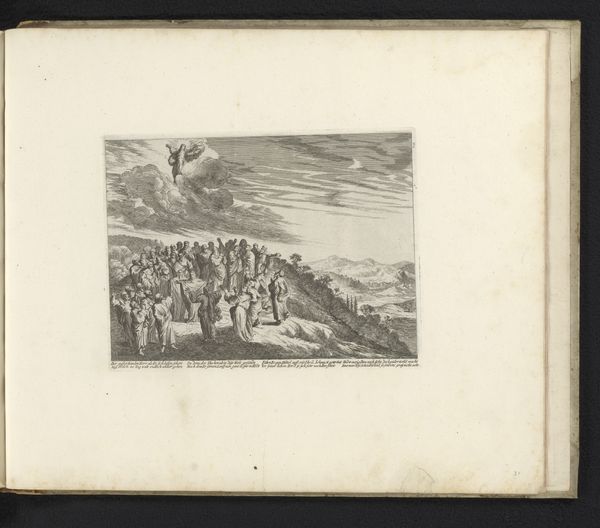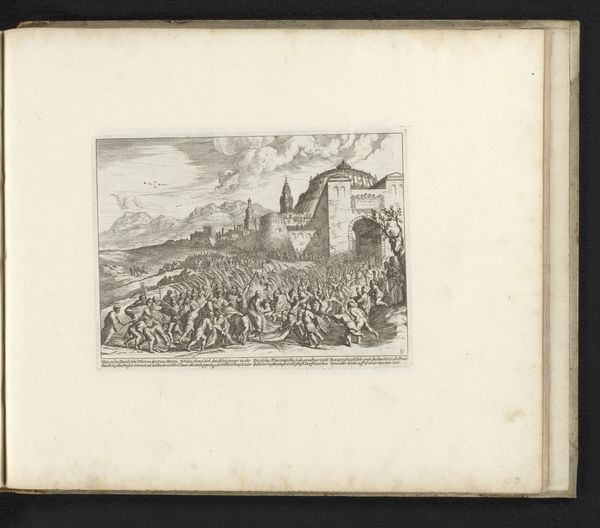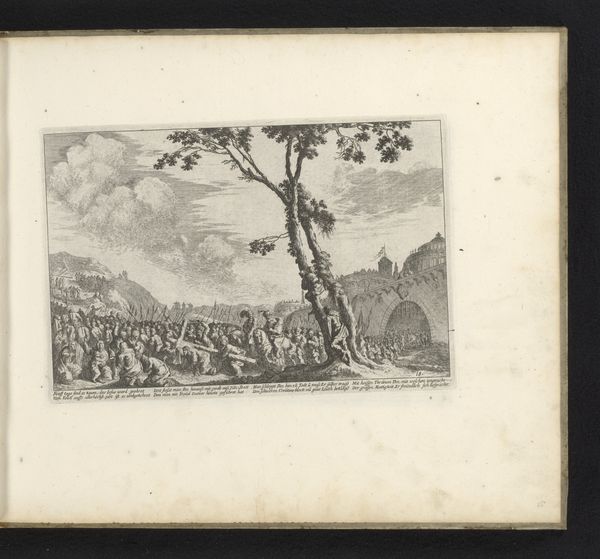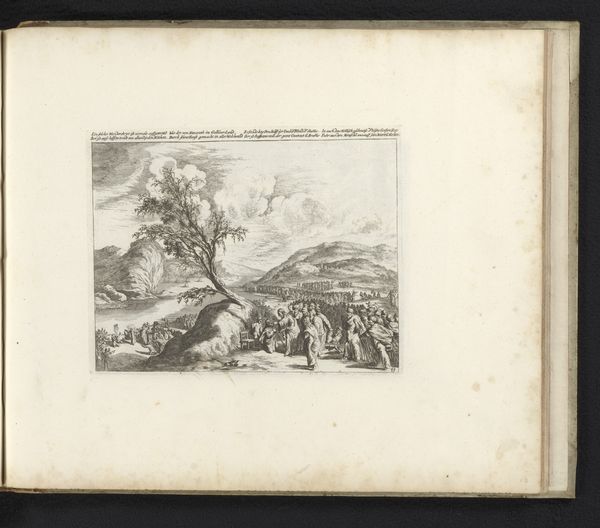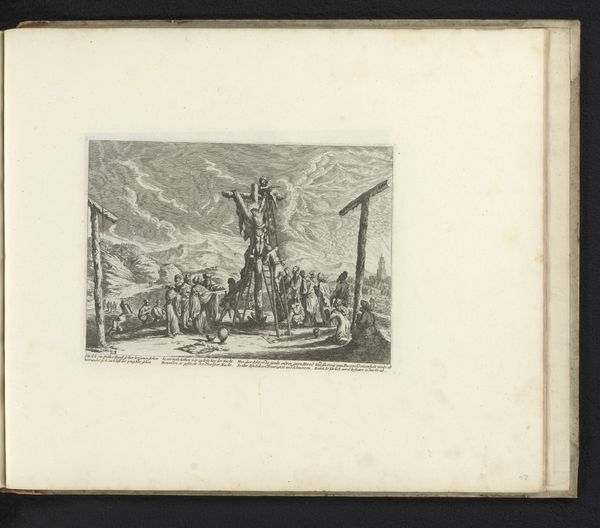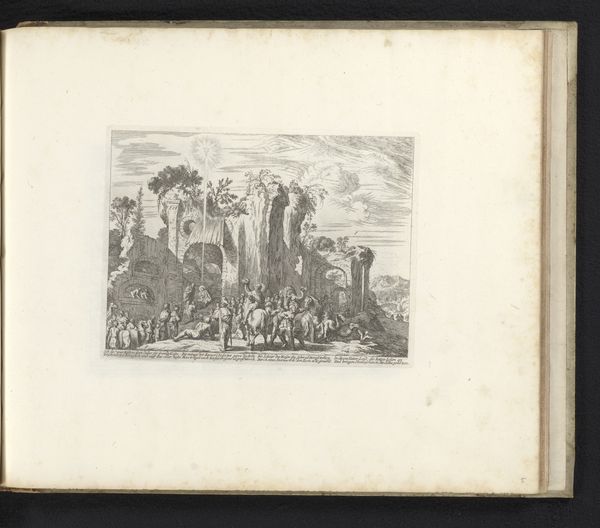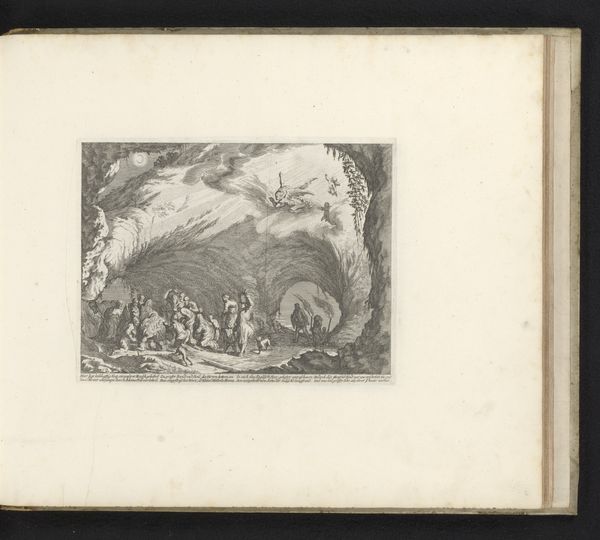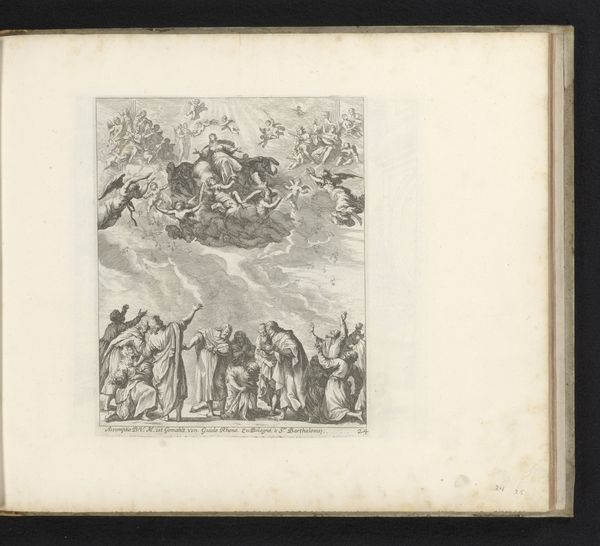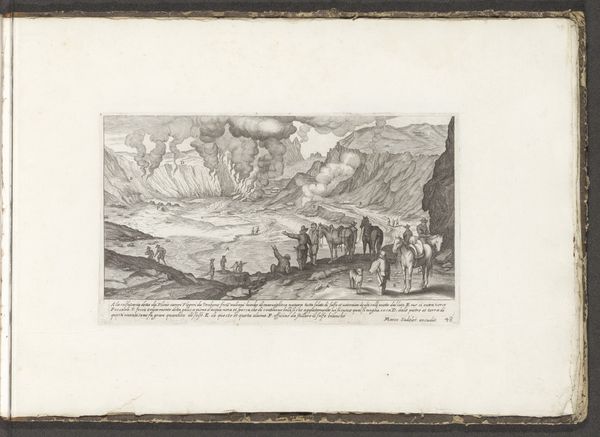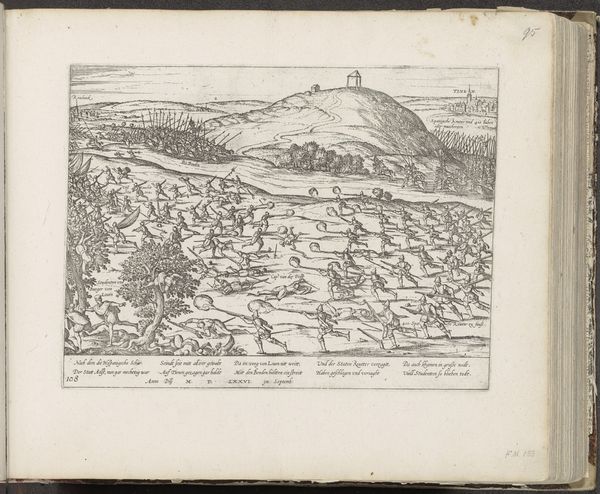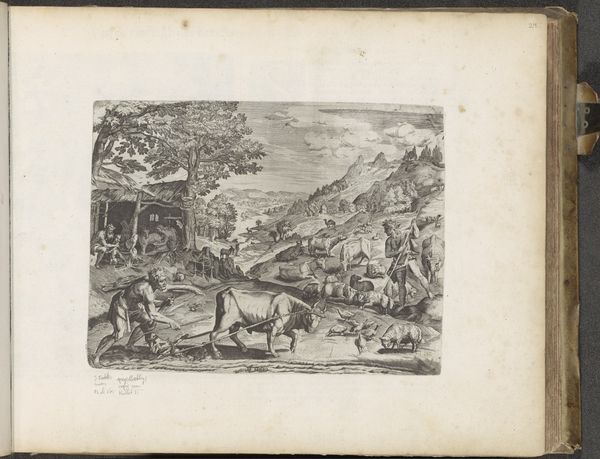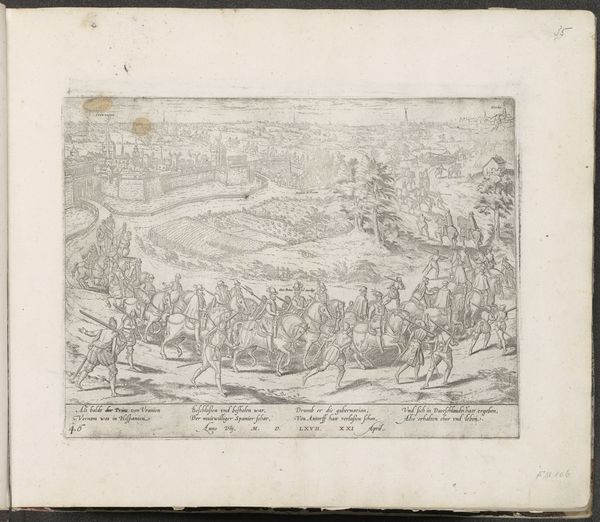
print, engraving
#
narrative-art
#
baroque
#
ink paper printed
# print
#
landscape
#
history-painting
#
engraving
Dimensions: height 157 mm, width 208 mm
Copyright: Rijks Museum: Open Domain
Melchior Küsel made this engraving, “Wonderbare spijziging”, in the 17th century in Germany. It illustrates the Feeding of the 5000, a miracle in the gospels where Jesus miraculously multiplies five loaves of bread and two fish to feed a large crowd. But beyond its overt religious symbolism, the image resonates with the social and economic anxieties of its time. The 17th century was marked by devastating famines, spurred on by climate change and war. Küsel’s depiction speaks to a deep-seated longing for abundance and divine intervention in times of scarcity. The detailed landscape, dotted with figures, also reflects the era's fascination with mapping and understanding the natural world. Scholars of religious history and the social history of food can help us to decode its multiple layers of meaning. The image's enduring appeal lies in its ability to capture both a spiritual event and the very real concerns of a society grappling with survival.
Comments
No comments
Be the first to comment and join the conversation on the ultimate creative platform.
